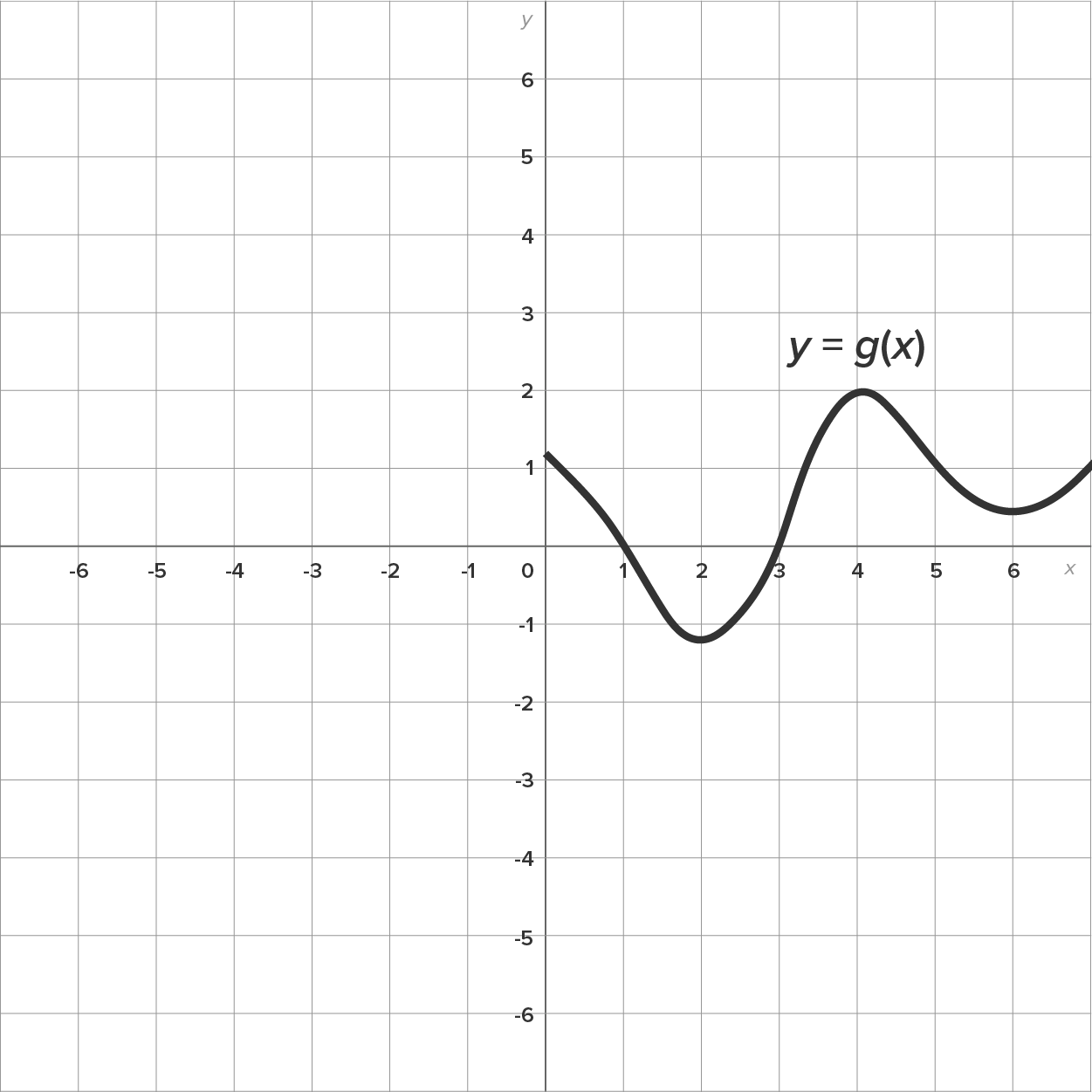Table of Contents |
Let’s say we have a function that passes through the points  and
and 
 and
and  Connect the two points with a curve that is continuous and differentiable (something other than a horizontal line between them). This means that the graph has no break and no sharp turn.
Connect the two points with a curve that is continuous and differentiable (something other than a horizontal line between them). This means that the graph has no break and no sharp turn.
 be continuous on the closed interval
be continuous on the closed interval  with
with  , and differentiable on the open interval
, and differentiable on the open interval  .
.
 .
.
Now, let’s look at a few examples of how Rolle’s theorem can be applied.
EXAMPLE
Here is the graph of some function , where
, where  .
.
 is continuous and differentiable, it follows by Rolle’s theorem that there is at least one value of c between 0 and 7 where
is continuous and differentiable, it follows by Rolle’s theorem that there is at least one value of c between 0 and 7 where  .
.

 ,
,  , and
, and  . Therefore, the guaranteed values of c are 2, 4, and 6.
. Therefore, the guaranteed values of c are 2, 4, and 6.
EXAMPLE
Consider the function on the interval
on the interval  .
.
 is continuous on any interval not including 0, and therefore is continuous on
is continuous on any interval not including 0, and therefore is continuous on  .
.
 is differentiable everywhere except where
is differentiable everywhere except where  , so
, so  is certainly differentiable on
is certainly differentiable on 
 and
and  . Therefore,
. Therefore,  .
.
 and 2 such that
and 2 such that  .
.

|
Start with the original function. |

|
Rewrite to use the power rule. |

|
Take the derivative. |

|
Rewrite with positive exponents. |

|
Set equal to 0. |

|
Add  to both sides. to both sides.
|

|
Multiply both sides by  . .
|

|
Divide both sides by 3. |

|
Take the square root of both sides. |
 the value guaranteed by Rolle's theorem is
the value guaranteed by Rolle's theorem is  . (In other words, since
. (In other words, since  is not on the interval
is not on the interval  it is not considered.)
it is not considered.)
 on the interval
on the interval  .
.
 , differentiable on the open interval
, differentiable on the open interval  , and
, and  , then Rolle’s theorem guarantees that there is a value of c between a and b such that
, then Rolle’s theorem guarantees that there is a value of c between a and b such that  , which means that there is a guaranteed horizontal tangent line at c. Then, you examined a few examples involving the application of Rolle's theorem.
, which means that there is a guaranteed horizontal tangent line at c. Then, you examined a few examples involving the application of Rolle's theorem.
Source: THIS TUTORIAL HAS BEEN ADAPTED FROM CHAPTER 3 OF "CONTEMPORARY CALCULUS" BY DALE HOFFMAN. ACCESS FOR FREE AT WWW.CONTEMPORARYCALCULUS.COM. LICENSE: CREATIVE COMMONS ATTRIBUTION 3.0 UNITED STATES.